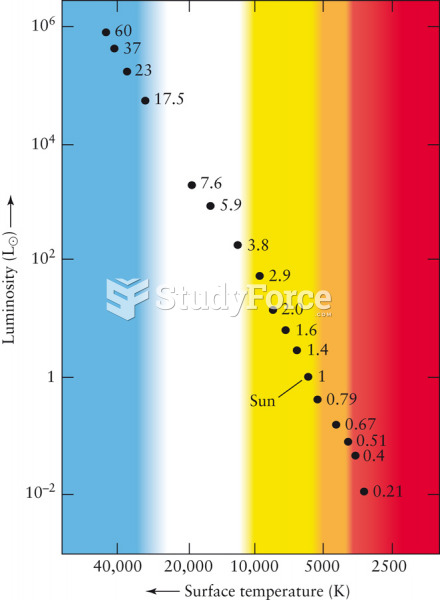Answer to Question 1
Stars near the galactic center are in elongated, high-speed orbits around Sgr A. Astronomers can use the orbit of one object around another to determine the masses of the objects.
Answer to Question 2
Two key experiments confirmed that space-time can be curved the presence of a mass: the advance of perihelion of Mercury's orbit and the motion of light near the Sun.
Each time Mercury returns to perihelion, its closest point to the Sun, it is about 29 km (18 mi) past the position predicted by Newton's laws. This is such a small distance compared with the planet's diameter of 4880 km that it could never have been detected had it not been cumulative. Each orbit, Mercury gains only 29 km, but in a century it's ahead by over 12,000 kmmore than twice its own diameter. To remedy this difference, he first calculated how much the Sun's mass curves space-time in the region of Mercury's orbit and then he calculated how Mercury moves through the space-time. The theory predicted that the curved space-time should cause Mercury's orbit to advance by 43.03 arc seconds per century, well within the range of uncertainty in the observed excess. His theory matched Newton's observations.
A second test of general relativity was related to the motion of light through the curved space-time near the Sun. Because light has a limited speed, Newton's laws predict that the gravity of an object should slightly bend the paths of light beams passing nearby. The equations of general relativity indicated that light should have an extra deflection caused by traveling through curved space-time, just as a rolling golf ball is deflected by undulations in a putting green. Einstein predicted that starlight grazing the Sun's surface would be deflected by 1.75 arc seconds, twice the deflection that Newton's law of gravity would predict. Starlight passing near the Sun is normally lost in the Sun's glare, but during a total solar eclipse, stars beyond the Sun can be seen. During the next solar eclipse, measurements were taken and they matched his predictions.







